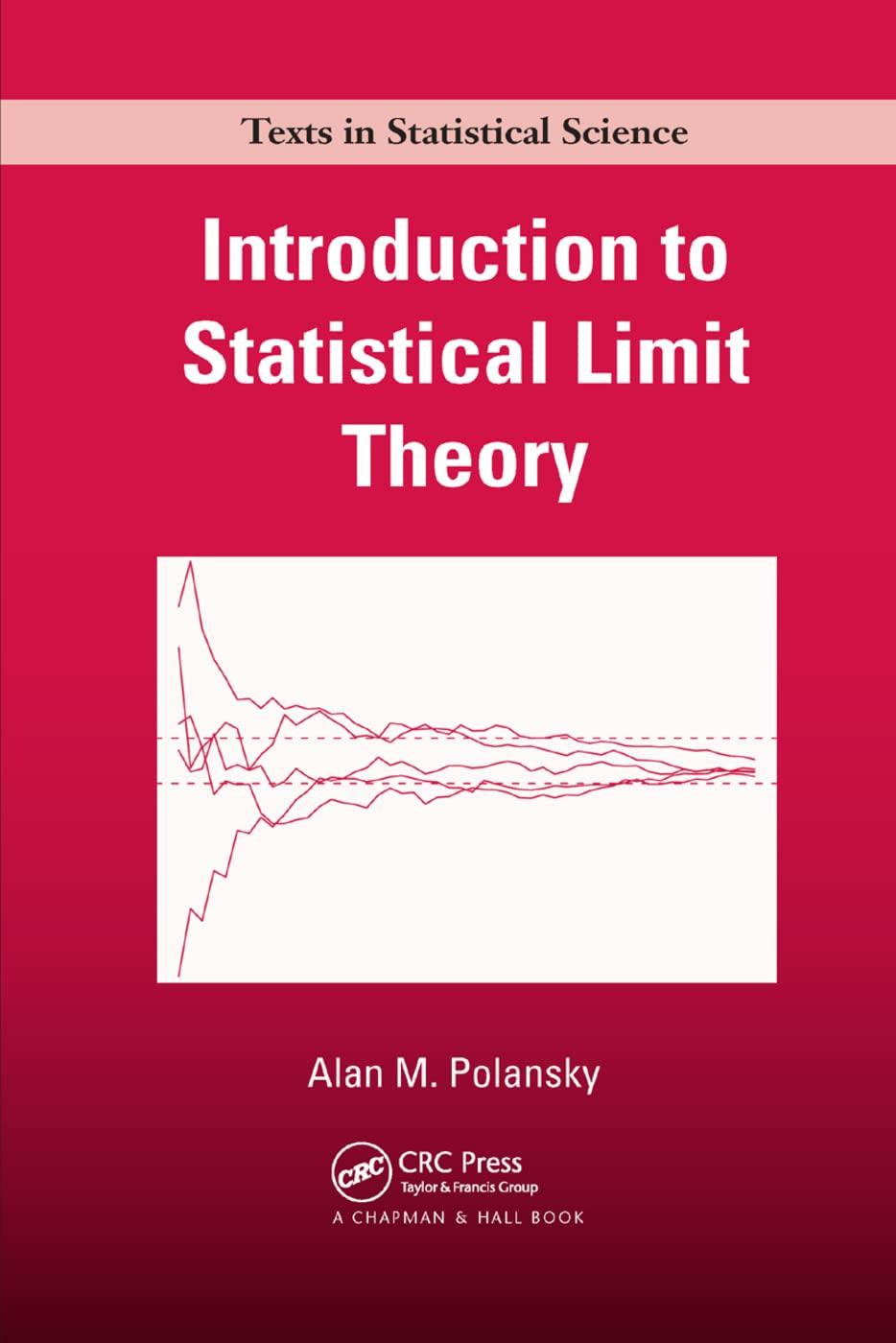In the context of Example 7.8, let (left{W_{n}ight}_{n=1}^{infty}) be a sequence of independent and identically distributed bivariate
Question:
In the context of Example 7.8, let \(\left\{W_{n}ight\}_{n=1}^{\infty}\) be a sequence of independent and identically distributed bivariate random vectors from a distribution \(F\) having mean vector \(\boldsymbol{\eta}\) and covariance matrix \(\boldsymbol{\Sigma}\). Let \(\mathbf{W}_{n}^{\prime}=\left(W_{n 1}, W_{n 2}ight)\) for all \(n \in \mathbb{N}\) and define \(\mu_{i j}=E\left\{\left[W_{n 1}-E\left(W_{n 2}ight)ight]^{i}\left[W_{n 2}^{j}-E\left(W_{n 2}ight)ight]^{j}ight\}\) and \(\mu_{i j}^{\prime}=E\left(W_{n 1}^{j} W_{n 2}^{j}ight)\). Let
\[\boldsymbol{\mu}^{\prime}=\left(\mu_{10}^{\prime}, \mu_{20}^{\prime}, \mu_{30}^{\prime}, \mu_{40}^{\prime}, \mu_{01}^{\prime}, \mu_{02}^{\prime}, \mu_{03}^{\prime}, \mu_{04}^{\prime}, \mu_{11}^{\prime}, \mu_{21}^{\prime}, \mu_{12}^{\prime}, \mu_{22}^{\prime}, \mu_{31}^{\prime}, \mu_{13}^{\prime}ight),\]
and prove that if we define \(h_{20}(\mathbf{x})=x_{2}-x_{1}^{2}, h_{02}(\mathbf{x})=x_{6}-x_{5}^{2}, h_{11}(\mathbf{x})=\) \(x_{9}-x_{1} x_{5}\),
\[\begin{gathered}
h_{22}(\mathbf{x})=x_{12}-2 x_{5} x_{10}+x_{5}^{2} x_{2}-2 x_{1} x_{11}+4 x_{1} x_{5} x_{9}-3 x_{1}^{2} x_{5}^{2}+x_{1}^{2} x_{6}, \\
h_{31}(\mathbf{x})=x_{13}-3 x_{1} x_{10}+3 x_{1}^{2} x_{9}-x_{3} x_{5}-3 x_{1} x_{5} x_{2}-3 x_{1}^{3} x_{5},
\end{gathered}\]
and
\[h_{13}(\mathbf{x})=x_{14}-3 x_{5} x_{11}+3 x_{5}^{2} x_{9}-x_{7} x_{1}+3 x_{1} x_{5} x_{6}-3 x_{1} x_{5}^{3},\]
then it follows that \(h_{20}(\boldsymbol{\mu})=\mu_{20}, h_{02}(\boldsymbol{\mu})=\mu_{02}, h_{11}(\boldsymbol{\mu})=\mu_{11}, h_{22}(\boldsymbol{\mu})=\) \(\mu_{22}, h_{31}(\boldsymbol{\mu})=\mu_{31}\), and \(h_{13}(\boldsymbol{\mu})=\mu_{13}\).
Step by Step Answer:






